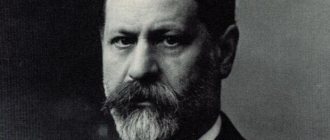10,000 hour rule
It takes 10,000 hours of practice to master any skill. You heard right. You need to train 3 hours a day for 10 years to become a master of your craft.
In his book Geniuses and Outsiders, American sociologist Malcolm Gladwell talks about becoming an expert. He talks about the 10,000 hour rule. We have already said what it means.
Now let's give examples.
Bill Joy
The developer of the famous Unix platform, Bill Joy, sat at the computer all day long and wrote codes. In this he was lucky - he studied at a university where students had access to modern technology.
In 1982, Bill founded Sun Microsystems, which was acquired by Oracle in 2010 for $7 billion.
Bill Gates
Bill Gates was also an avid programmer. In order to sit at the computer longer, he skipped physical education classes and worked part-time as a software tester.
At the age of 17, he created the company Traf-O-Data and earned $800 from it.
Then he entered Harvard University to become a lawyer, but after a couple of years he left and founded Mircrosoft with Poll Allen.
All these people trained and studied for many years before becoming professionals.
Below we have indicated how much you need to train to become an expert.
What does high quality and fast mean?
It is believed that any action can be performed perfectly only if all attention is focused only on it. Actually this is not true. This is typical only for those activities for which the skill of performing has not yet been acquired. Then, indeed, the dispersal of attention plays a bad joke both on the learning process and on the activity itself.
Many people strive to do things quickly. But in reality this does not happen. Fast work can only be done if there is automatism, that is, when the skill is formed. What is fast? In fact, this concept is individual for everyone. It all depends on his inclinations. Temperament plays a very important role here. Thus, choleric people are able to complete any task as quickly as possible, while melancholic people cannot work at such speed.
Therefore, when checking whether a person is doing work quickly or not, you need to look first of all not at the numbers on the stopwatch, but at your subjective feelings . It is important that the work is not felt. Only then can we talk about its speed. But there is nothing wrong with competing with yourself in terms of how quickly you can do things.
What skills to develop?
Ability to speak. Perform in front of people and not be afraid of crowds.
Read further: Oratory for beginners: exercises and rules
Communication skill. Speaking in front of an audience is one thing, but interacting closely with people is another. Learn to please people and make useful connections.
Read more: How to become charming and pleasant to talk to
Ability to persuade. If you just talk, there will be no effect. You also need to appeal to the feelings of others and convince them.
Read more: 9 secret ways to convince people
The ability to say NO. Sometimes you have to refuse people. If you constantly help others, you will not have time for your own development.
Read more: How to learn to say no
Salesmanship. Master this skill even if you are not a sales agent. You must be able to sell not only goods, but also yourself, your thoughts, opinions and skills.
Read more: How to learn to sell
Goal setting skill. As Chuck Palahniuk said, “If you don’t know what you want, you’ll end up with what you don’t want.”
Goals must be spelled out, specified as much as possible, and also calculated. Correctly set goals motivate, because... you can track the result, evaluate it and adjust further actions. It is best if the goals are broken down into stages. This will help you better evaluate the result and change course if something didn’t go as planned.
Read more: How to set goals correctly and achieve them
Planning skill. To achieve goals, you need to be able to make plans. WorkTek can help you with this. It allows you to plan not only a month or a year, but your entire life for 100 years.
Discipline. To follow the plans you create, you need willpower and discipline.
Read more: How to discipline yourself and form healthy habits
Fast decision making. To acquire this skill, you need to learn to think strategically, draw conclusions and learn how to manage stress.
Ability to cope with stress.
Read more: What is stress and how to deal with it
Reading skill. If you read books like regular novels, you won't get any benefit from them. You need to write down interesting ideas and apply them in life.
Read more: Benefits of reading books
Creative thinking. Special exercises will help in its development.
Read more: Developing creative thinking
The skill of creating new habits and abandoning old ones. It takes 21 days to quit a bad habit and create a good one. Try to find a useful habit and make it a part of your life.
Read more: Rules for forming healthy habits
Healthy eating. You need to know what is harmful and what is useful. What is worth eating and what is not.
Read more: Healthy eating as a lifestyle
Sport. Master some sport.
Read more: 12 reasons why you need to exercise
Treat failures correctly . Learn to take a blow with dignity, consider failure as a life experience gained, analyze the situation, draw conclusions and move on!
Skill in working with digital technologies. This is the information age.
If you don’t know how to find the information you need on the Internet, then you become uncompetitive.
Leader Skills
First of all, understanding what key skills are for a resume is important for those applying for a management position. Potential managers are always subject to increased demands and their candidacies are checked more thoroughly.
The following skills can be specified as skills:
- resolve conflict situations;
- plan and optimally organize the work process;
- make decisions and be responsible for their results independently;
- think critically;
- effectively manage time and people under subordination;
- apply motivational programs;
- think strategically and creatively;
- negotiate;
- communication skills, the ability to gain the trust of colleagues, partners and senior management.
It is important to be able to distinguish between your skills and personal qualities. The former are acquired through work and learning, while the latter characterize you as a person.
You can also add multitasking to the list, the ability to adapt to different conditions, delegate some authority and monitor the proper implementation of assigned tasks.
Good to know: How to write a cover letter for a resume
Fifth stage - master
Naturally, difficult situations in work also happen to masters, but their percentage is less than one. Such a person not only knows how to do something, but also finds interesting approaches to performing any activity. This is a zone of professional creativity. A person can not only masterfully perform his work, the performance of which is almost invisible to others, but he is also able to teach others. As a rule, people do not become masters before the age of 50. To develop a person as a master, you need to devote at least 25 years to this activity.
The ability to control your emotions is perhaps the most useful skill for communication. But the most harmful to health... Author unknown
#9. Be more productive
My definition: Make the most of 24 hours of each day.
This is a rather controversial skill, since productivity itself is a rather abstract concept. The key metric of progress here is time saved, as well as the quality and quantity of results achieved.
Being more productive isn't about work. This is about activities that are important to you: time with family, meeting with friends, work, entertainment.
Subskills
- clearly define your passion/purpose
- clearly state your values
- commit to personal growth
- develop introspection
- concentrate
- enter a state of flow
- achieve the “infinity effect”
- create SMART goals
- really understand the Pareto principle (80/20 rule)
- use the Eisenhower matrix
- plan your career
- master time management
- learn to learn
- have KPIs
- master the maximum speed of the mouse/trackpad
- Type faster on your computer or phone
- and much more!
My story about productivity
After 13 years of working in professional software development, I acquired a number of skills that allowed me to be more productive on the computer than most people.
Years later, as I became more self-reflective, I realized that I had these skills and began to use them even more actively. That's when I decided to start writing on Medium. My first article was dedicated specifically to productivity tips.
How to learn to be productive?
I suggest starting with those sub-skills that will help you develop self-awareness. Learn to identify your values/passions/goals, commit to personal growth, master the Eisenhower Matrix. Why is it important? Peter Drucker has an excellent answer to this:
“There is nothing more useless than doing something efficiently that doesn’t need to be done at all.” - Peter Drucker
Looking back, this is the best advice.
Next, make sure you understand the Pareto principle and start applying it in all areas of your life. Also, learn to set SMART goals.
Now that you have the basic skills to accelerate productivity, you can get down to specifics.
If you often work on your computer:
- Learn to use your mouse/trackpad at maximum speed
- Learn to touch type quickly
- Learn the key hotkeys in your operating system, as well as in programs that you often use.
At first it will seem that you are working even slower, but in just a week you will get into the rhythm. Thanks to these skills alone, I work on a computer 2-3 times faster than 90% of people. It's worth investing time and effort into.
Resources
Free
- Article: 34 Quick Tips for a More Productive 2019
- Article: Completely and Consistently Smash Your Goals with The Limitless Effect
- Tool: Limitless Calendar
- Article: Smart Goals
- Article: Eisenhower Matrix
- Course: Learning to Learn (free)
- Book: How we Learn (referral link)
- Article: Pareto Principle
- Article: How To Move Around Your Mac At The Speed Of Light
Wider circle
Modern studies of centenarians, among the many factors of a happy life in old age, highlight an active social life, strong family relationships, a wide circle of contacts outside the family, and the presence of regular and meaningful communication.
In books on self-development (for everyone who strives for “successful success”), the most frequent recommendations are also related to building relationships with other people: developing a network of business contacts (networking), finding “your pack” (a circle of supportive communication), creating a “dream team” "(groups of like-minded people for the joint implementation of plans, projects), development of leadership skills (which are almost all communication skills), etc.
Both the objective and subjective quality of our life depends on how well we are “embedded” (socialized) in social relationships. The main means of socialization is communication. And the better a person knows how to communicate, the better his communication skills are developed, the more successful his socialization will be.
#10. Paint
Photo credit: rawpixel on Unsplash
My definition: Be able to illustrate an idea.
Drawing is an art that takes many years to master to achieve perfection. Fortunately, this is a very broad skill that can be easily broken down into “sub-skills.” Each small sub-skill can be learned fairly quickly.
Subskills:
- sketching techniques (on paper or in software)
- line drawing (on paper or in a program)
- color selection techniques (on paper or in a program)
- using tools (Photoshop, Illustrator)
- how to hold a pencil correctly
- how to control line weight
- faces, people, creatures, objects, landscapes
- shadow techniques
- realistic, cartoon, cartoon style
- technical drawing (architecture, electrical engineering, engineering, scientific fields, etc.)
- and much more!
My story about drawing
Drawing was the first skill I decided to learn using the SkillUp method. And I was always sure that I couldn’t master drawing, so I wanted to prove to myself that this was not so. And I proved it.
I trained for 30 minutes every day for a month, mostly learning on YouTube. I learned sketching, shading and color matching in Photoshop.
The results exceeded my expectations.
How to learn to draw?
Since drawing is a very broad skill, I recommend first mastering the basics of any sub-skill (from the list) with 5 hours of practice (30 minutes per day). You'll be surprised how quickly you can master most sub-skills if you don't skip classes and choose good learning materials.
Resources
Free
- Youtube.com
- We type in the search engine: “how to <enter subskill>” or “how to quickly learn <enter subskill>”
* I do not provide links to specific lessons, because everything changes very quickly and, moreover, it is a matter of taste.
The first stage is the student stage
The person has already become familiar with his activities, and a little fear has subsided. The man realized that if he puts in some effort, the skill will be achieved after some time. At the same time, a person has almost no theoretical or practical experience. So he has to learn to do even the most basic things. For a writer, this might be writing a coherent sentence. In mathematics this is arithmetic, in linguistics we can consider the main points in style, spelling, and punctuation. In football, this could be general physical endurance, ball handling skills, and so on.
Appendix A: 14 Universal Tips for Mastering Most Skills
- When watching a video, take advantage of rewinding: you can go back or skip the uninteresting part. Skip through introductions and conclusions if you like. Skip off-topic materials.
- If your teacher doesn't explain things clearly, find another one. Nothing personal. It's your time and your money.
- Don't forget to adjust the playback speed and use subtitles.
- Never forget the Pareto principle (80/20 rule).
- Always break skills down into smaller sub-skills.
- Always track your progress and save the resources you used for learning - this will be useful in the future.
- Keep notes: what you studied and what you did.
- Be consistent. Practice a little every day.
- Diversify your practice. Don't do the same exercise over and over again.
- Use spaced repetition techniques. I mean, don’t repeat randomly - systematize.
- Try to practice with another person as much as possible. Firstly, this increases responsibility. Secondly, training benefits both of you.
- Share your successes with others or online. This also adds responsibility, plus this is how we strive for great results.
- The most effective learning is with the help of a mentor. Find someone who is willing to teach you one on one.
- Try to study something that really interests you. This will keep you motivated.
#7. Photograph
This is me taking a portrait of my wife in Nepal
My definition: Learn how to use a camera to take great photos.
Photography, like drawing, is a very broad skill. With the proliferation of smartphones and DSLR cameras, more and more people are becoming interested in photography. Luckily, it's now very easy to learn the basics of photography and start taking beautiful pictures.
Subskills
- Terminology
- Framing
- Rule of thirds
- Composition
- How to read a histogram
- Camera types
- Understanding the basic principles: shutter speed, aperture, light sensitivity
- Portrait photography (includes many sub-skills)
- Landscape photography (includes many sub-skills)
- Product photography (includes many sub-skills)
- Photography of moving objects (includes many sub-skills)
- Macro photography
- Long exposure photography
- Processing Photos in Camera Raw
- Processing photos in Photoshop
- Processing Photos in Lightroom
- and many many others!
My story about photography
Previously, I had no interest in photography at all. I first got a more or less high-quality camera when I bought an iPhone 6. I started shooting and experimenting with processing through different applications. The process captivated me.
When I was planning a trip to Iceland, I decided to improve my skills in order to bring back worthwhile photos from the trip. I spent quite a bit of time researching the issue - and the result was not long in coming: I started shooting quite well.
Then I traveled around the world for a year. On that trip I took about 15 thousand photographs. I was already doing great—people even thought I was a photographer. Therefore, in India, I decided to buy my first DSLR and continued my journey with it. Learned a lot of new things!
Later, I photographed several Sundara events and the opening of a new WeWork branch in Bangalore, India.
I'm currently learning about portrait photography and will be training on these beautiful models: Carla Diaz, Diana Jabba, and Kevin Nguyen.
How to learn to take photographs?
To begin with, I advise you to master the rule of thirds: it will be those same 20% of efforts that will give 80% of the results. The rule of thirds can be mastered in 5 minutes, and your photos will immediately become at least twice as good.
The rule of thirds is one of many framing techniques. By the way, the rest are also worth studying. Amateur photographs are often successful, but due to poor framing they don’t look very good. This can be corrected by cropping the photo during processing.
Another important aspect is exposure. Learn what an ideal exposure looks like and what underexposure/overexposure is. Learn to read a histogram. Learn to use these techniques to create the effect you want.
Framing and exposure help you take beautiful photos, even with inexpensive equipment. Yes, a DSLR camera “helps” with exposure, but a phone can also expose a photo correctly.
For a month, practice taking photographs in a certain style. I started with landscape photography. Now I understand that landscape photography is probably the hardest thing to learn how to take really cool pictures.
When you're ready to buy a camera, choose a lens that matches the style you want to shoot in. With experience, you will realize that in most cases the quality of photographs is determined by the lens, not the “body” of the camera.
I advise you to master no more than one style per month. This focused approach allows you to hone each skill quite well.
Resources
Free
- Article: 25 Common Photography Terms All Beginners Need to Know
- Article: Rule of Thirds
- Article: 10 Top Photography Composition Rules
- Video: How to read a camera histogram
- Article: A Simple Guide to the Different Types of Digital Cameras
- Video: If You're Serious About Taking Better Portraits, Watch This
- Article: 14 portrait photography tips you'll never want to forget
- Article: Lightroom Crash Course: Ultimate Beginner's Guide To Lightroom
Paid
- Book: Scott Kelby's Digital Photography Boxed Set, Parts 1, 2, 3, 4, and 5 (I learned the lion's share of what I know from Scott Kelby's books).
- Book: Mastering Exposure in Digital Photography










